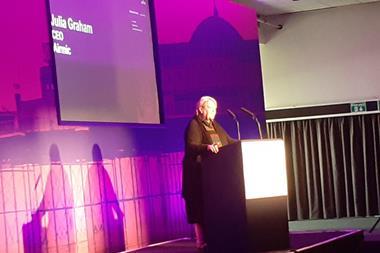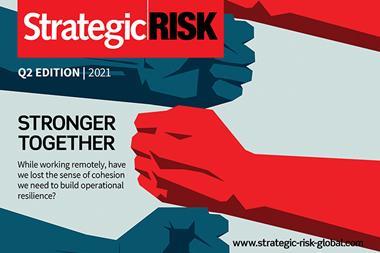The risk management standard is central to the development of our profession, but is only a part of a bigger cultural change in the industry, says Nick Chown
"Setting new standards," my chosen theme for the coming year, is an attempt to encapsulate the important changes taking place in our profession, both in the scope of what we do and how we do it.
The job of risk manager is evolving faster than at any time, certainly, that I can recall. I believe it is essential to take stock and to identify the core function and values of a good risk manager. In short, to set standards for risk managers.
As I see it "Setting new standards" is the next step in a continuous process, and it is important to appreciate the bigger pictur
The past 12 months have been highly productive for Airmic. It has been in the thick of a range of issues vital to its members – from terrorism, to employers' liability to challenging the seemingly remorseless decline in the availability of sensibly priced insurance.
t has demonstrated its continuing ability to influence the thinking of government, civil servants and the insurance industry.
But the most important event was the launch of the risk management standard last September by Airmic, the Institute of Risk Management (IRM) and Alarm.
The standard helps to elevate risk management and the risk manager on to a new professional footing. Compiled by practitioners at the forefront of our industry, it is a benchmark of good practice.
That, however, is not enough on its own. As my predecessor David Ireland has said recently, the standard will only be effective to the extent that its principles are followed. We have made a good start in that respect, and now we must follow through.
The standard is a document that sets out a process and the principles behind it. That process is, of course, the management of business risk – something that goes well beyond just buying insurance, vital as that function continues to be.
The standard takes the practitioner from A to Z through the subject – from the need to understand and incorporate a company's business strategy, to identification of risk, its evaluation, mitigation, the development of contingency plans, and ultimately the transfer of some of the risk to an insurer.
The standard is not a tick-in-the-box exercise, and we do not expect it to be followed slavishly. The document allows risk managers freedom to take into account the complexities and peculiarities of their own individual organisations.
Promoting the principles behind it, however, is a priority for Airmic and our colleagues at Alarm and the IRM over the coming year.
Interest in the standard is already intense. It is being translated into several languages and being promoted on a continent-wide basis by our colleagues at the association for all European risk managers.
The standard is, however, just part of the bigger cultural change that we wish to promote within industry to ensure that risk management in its widest sense is embedded in the culture of all enterprises; that it is taken fully into account in strategy development, business planning and performance and change management.
None of this means that we shall neglect our bread-and-butter functions: disseminating information to our members; supporting the excellent work of our special interest groups; reacting to specific events; representing our members' interests to insurers, legislators and other decision makers.
These are exciting and challenging times for all risk managers. Exciting because risk management is breaking new ground and has acquired a higher profile than ever; challenging because the demands and expectations placed upon us are correspondingly greater.
That is why we need to set new standards.
Nick Chown is the new chairman of Airmic.

















